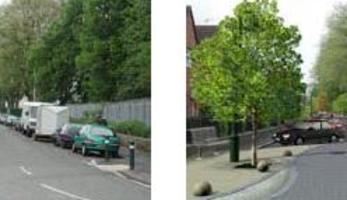Residential traffic management (home zones)
Summary
The introduction of home zones was aimed at ensuring the transport system makes an active contribution to the physical, social and environmental regeneration of Bristol; reducing traffic accidents and improving personal safety; and ensuring that the transport system complements good health and wellbeing.
Implementing sustainable mobility
Home zones are residential streets, or groups of streets, that are designed primarily to meet the interests of the local community, enabling the street to operate primarily as a space for social use. Besides residential traffic management measures such as traffic calming, the home zones are aimed at community involvement, the reallocation of road space and environmental improvements. Their introduction is part of UK policy, and various initiatives, including government-funded pilot schemes, as well as projects run by private developers, have resulted in an increase in such schemes.
The measure involved the remodeling of residential streets in order to give priority to sustainable mobility modes and to change the way the streets were perceived and used.
Progress
The measure was implemented by Bristol City Council and the UK charity Sustrans, whose knowledge of home zones in northern Europe and involvement in schemes emerging elsewhere in the UK informed the development of the initial design parametres and programme. Prior to implementation, there was also a thorough review of community involvement work in relation to the Department for Transport’s Home Zone Pilot Projects and study visits to model home zones in Holland and Germany.
Outcomes
Sustrans Community Travel Workers worked intensively with the community to introduce home zone ideas, involve residents in the design process and galvanise support for the project.
The community involvement process helped to demonstrate the positive impact that residents can have on local transport projects and the enthusiasm they have for helping to improve their local environment. Involving residents in the installation of public art helped to strengthen local identity.
The project showed that streets can be designed with non-conventional street features without comprising safety. The new layouts created a unique local environment that not only kept cars moving slowly, but gave equal priority to motor vehicles, cyclists and pedestrians. The unique interplay among all the involved parties ensured the success of this measure.







